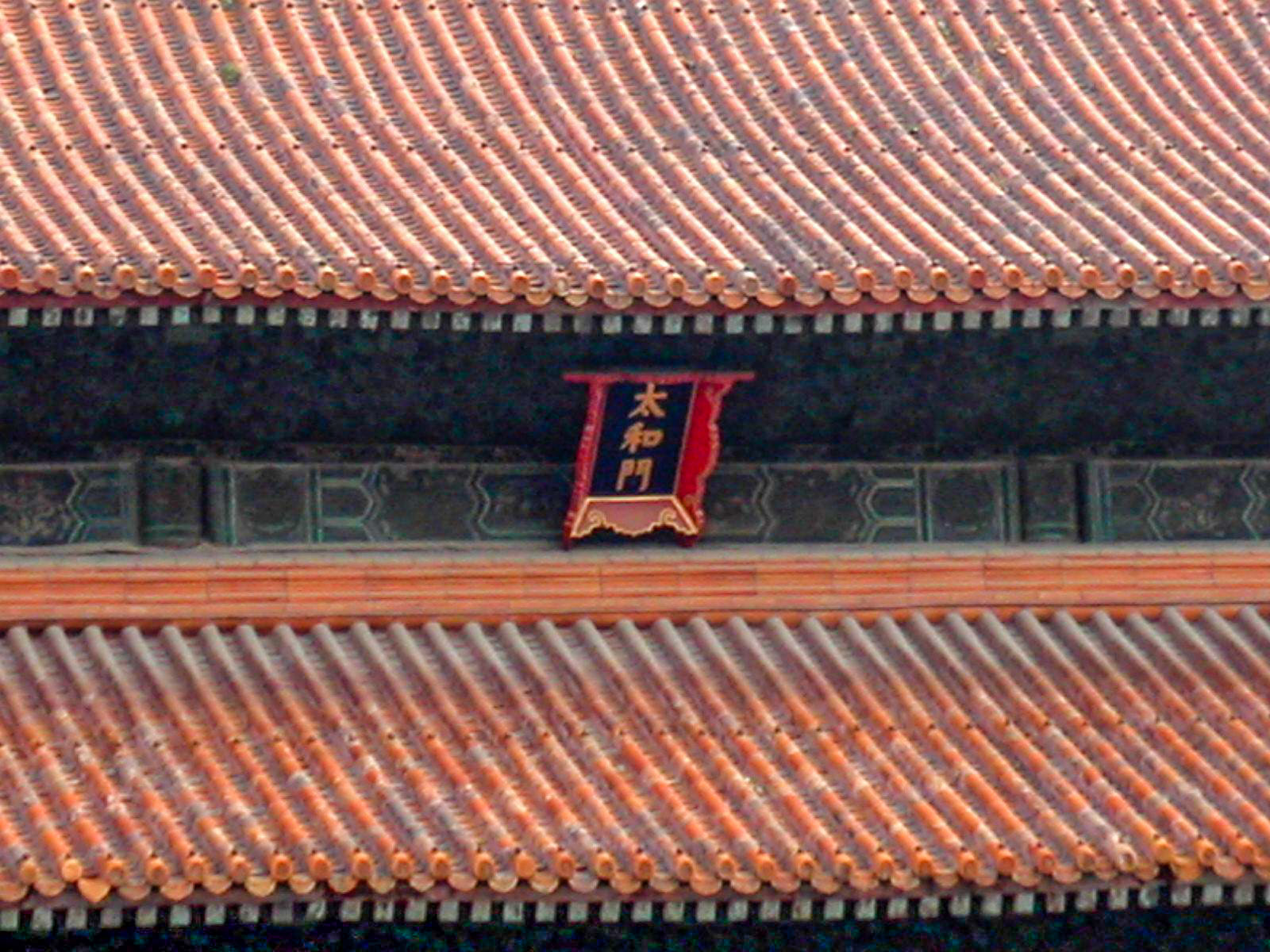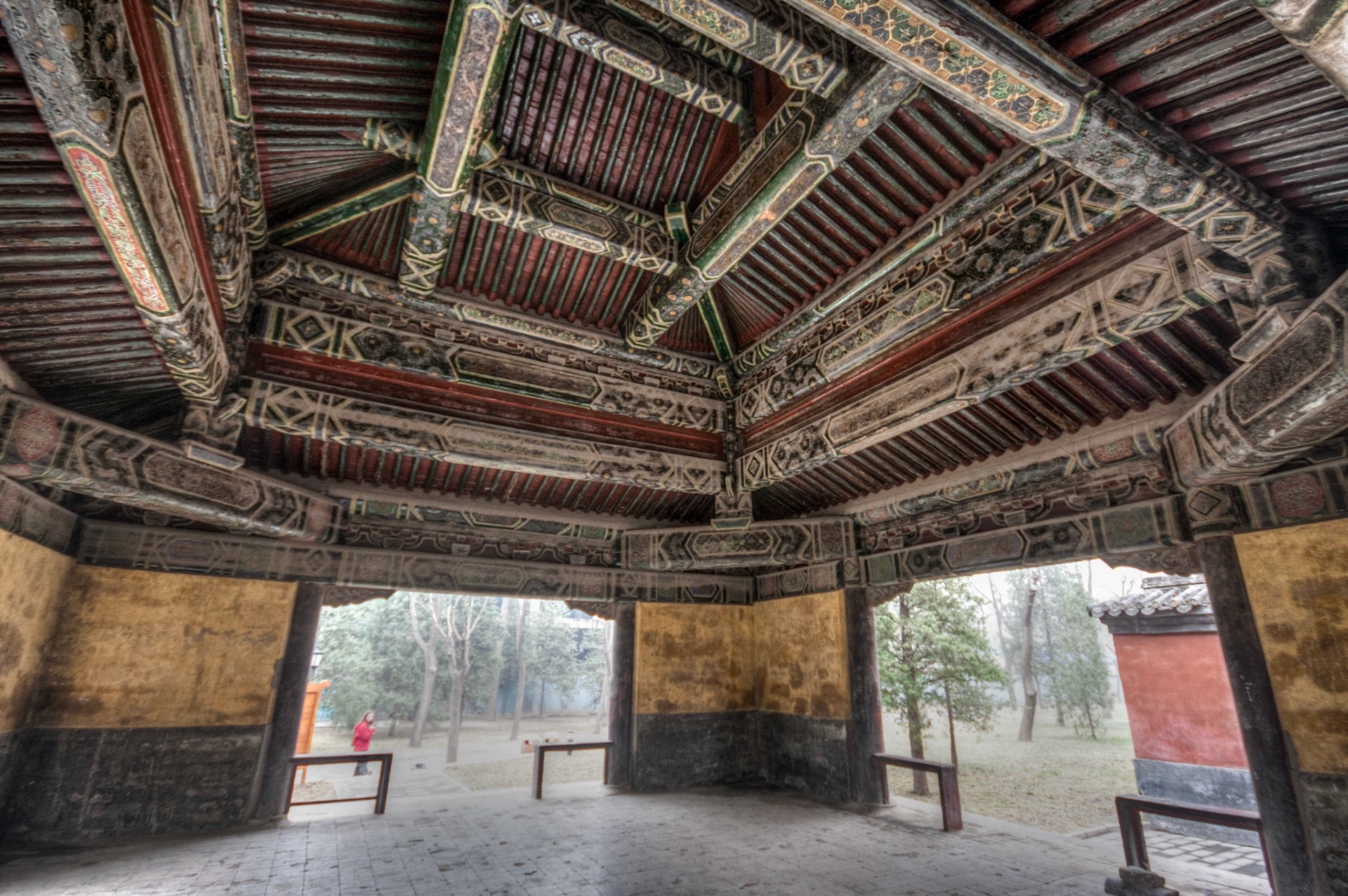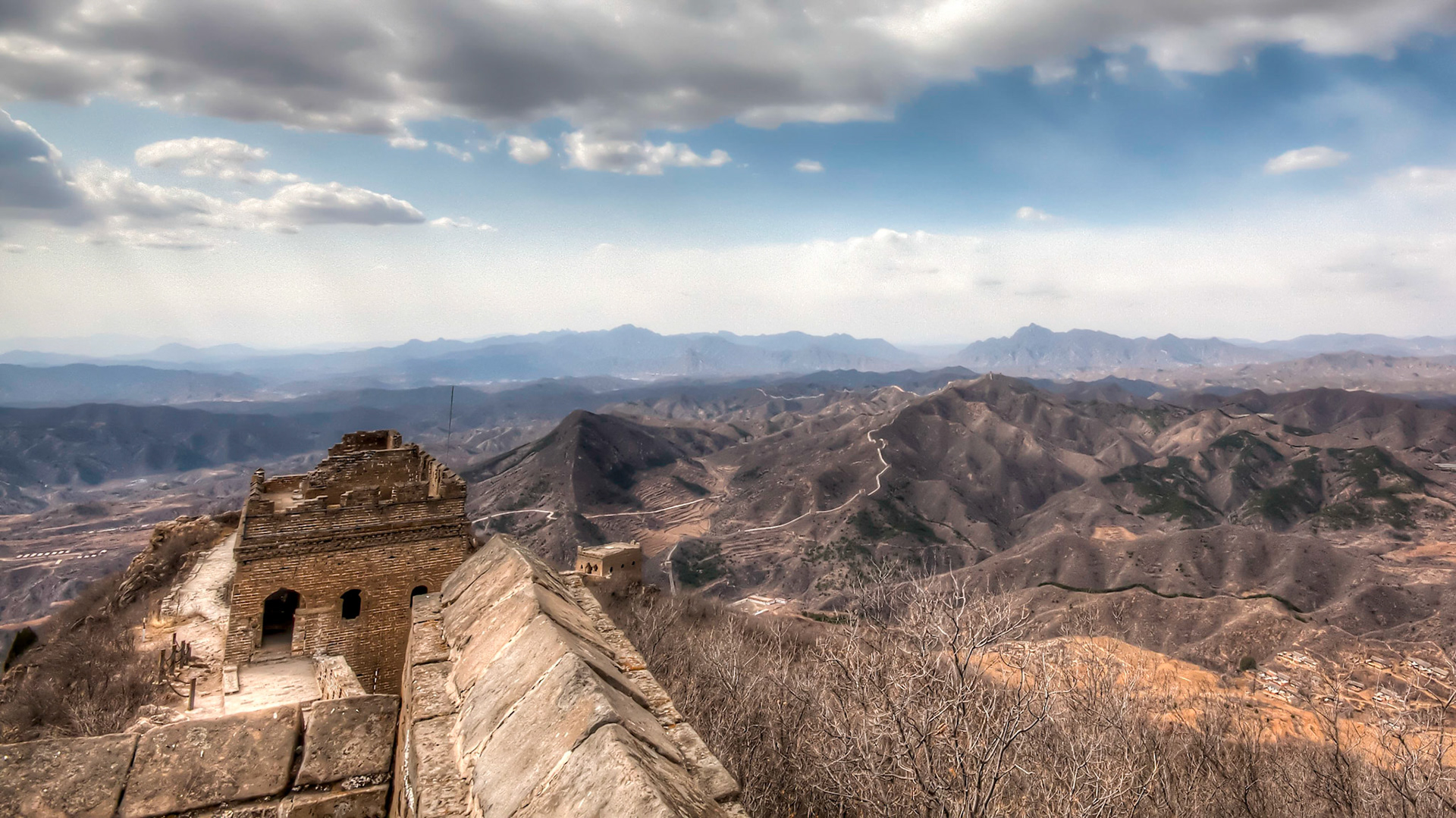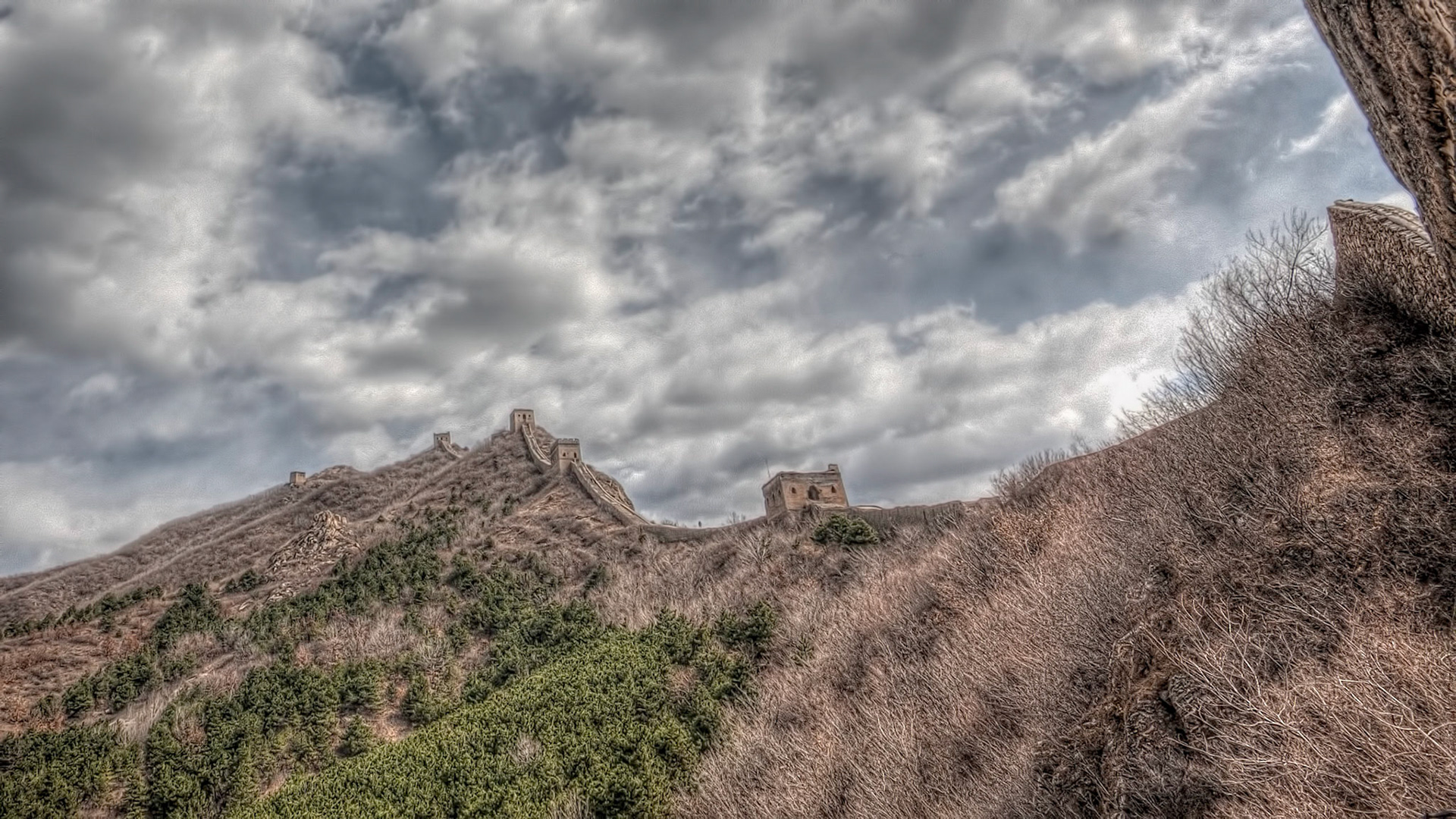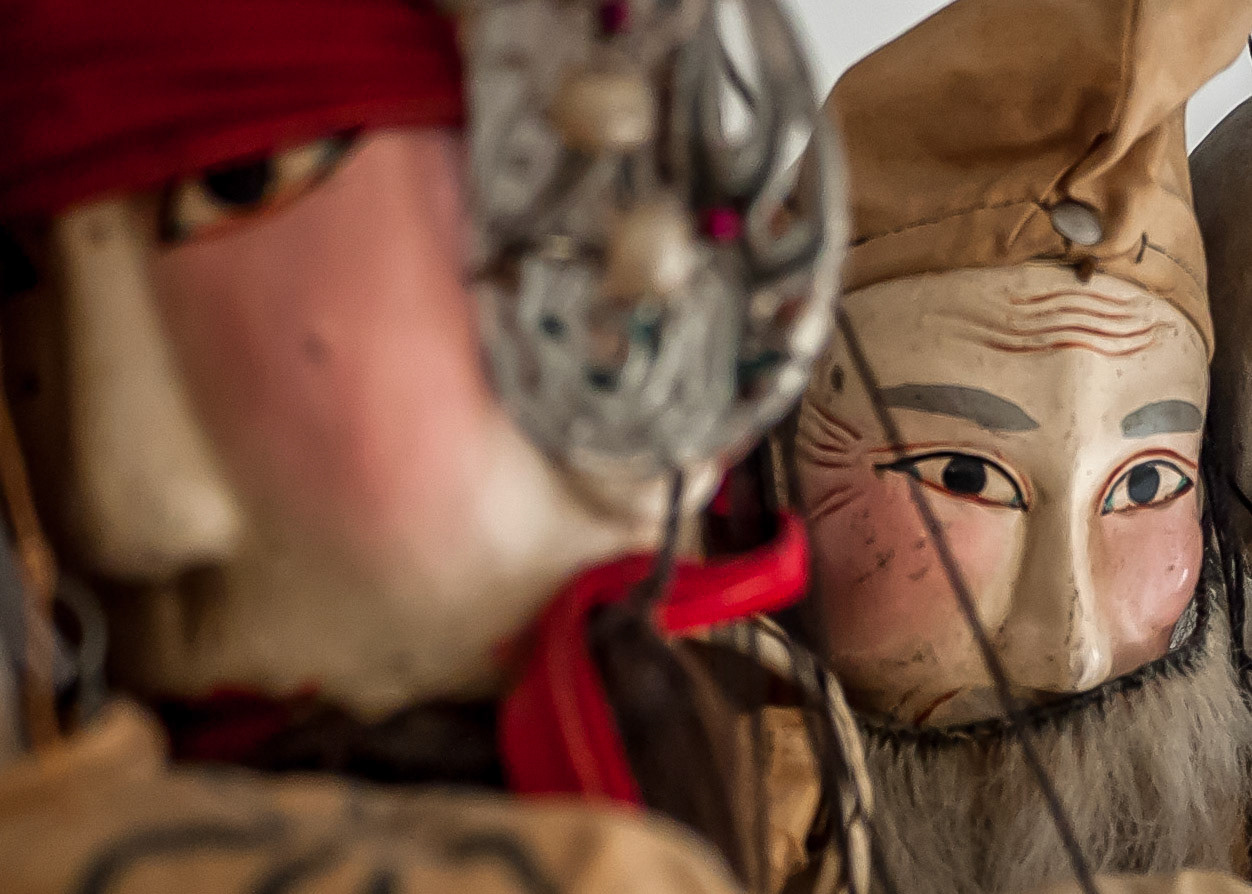
Lijiang, Yunnan, China

Now a popular touristic destination, and UNESCO Heritage Site, Lijiang has a history going back more than 800 years and was once a confluence for trade along the old tea horse road. The Lijiang old town is famous for its orderly system of waterways and bridges. The old town of Lijiang differs from other ancient Chinese cities in architecture, history and the culture of its traditional residents the Nakhi people, therefore people there are called 胖金哥 and 胖金妹 (pàng jīn gē, pàng jīn mèi, male and female respectively). The town was ruled by the Mu Family during the portions of the Ming and Qing Dynasties, a period of nearly 500 years.

Now a popular touristic destination, and UNESCO Heritage Site, Lijiang has a history going back more than 800 years and was once a confluence for trade along the old tea horse road. The Lijiang old town is famous for its orderly system of waterways and bridges. The old town of Lijiang differs from other ancient Chinese cities in architecture, history and the culture of its traditional residents the Nakhi people, therefore people there are called 胖金哥 and 胖金妹 (pàng jīn gē, pàng jīn mèi, male and female respectively). The town was ruled by the Mu Family during the portions of the Ming and Qing Dynasties, a period of nearly 500 years.



Now a popular touristic destination, and UNESCO Heritage Site, Lijiang has a history going back more than 800 years and was once a confluence for trade along the old tea horse road. The Lijiang old town is famous for its orderly system of waterways and bridges. The old town of Lijiang differs from other ancient Chinese cities in architecture, history and the culture of its traditional residents the Nakhi people, therefore people there are called 胖金哥 and 胖金妹 (pàng jīn gē, pàng jīn mèi, male and female respectively). The town was ruled by the Mu Family during the portions of the Ming and Qing Dynasties, a period of nearly 500 years.



Now a popular touristic destination, and UNESCO Heritage Site, Lijiang has a history going back more than 800 years and was once a confluence for trade along the old tea horse road. The Lijiang old town is famous for its orderly system of waterways and bridges. The old town of Lijiang differs from other ancient Chinese cities in architecture, history and the culture of its traditional residents the Nakhi people, therefore people there are called 胖金哥 and 胖金妹 (pàng jīn gē, pàng jīn mèi, male and female respectively). The town was ruled by the Mu Family during the portions of the Ming and Qing Dynasties, a period of nearly 500 years.



Now a popular touristic destination, and UNESCO Heritage Site, Lijiang has a history going back more than 800 years and was once a confluence for trade along the old tea horse road. The Lijiang old town is famous for its orderly system of waterways and bridges. The old town of Lijiang differs from other ancient Chinese cities in architecture, history and the culture of its traditional residents the Nakhi people, therefore people there are called 胖金哥 and 胖金妹 (pàng jīn gē, pàng jīn mèi, male and female respectively). The town was ruled by the Mu Family during the portions of the Ming and Qing Dynasties, a period of nearly 500 years.




Tiger Leaping Gorge (simplified Chinese: 虎跳峡; traditional Chinese: 虎跳峽; pinyin: Hǔtiào Xiá) is a scenic canyon on the Jinsha River (Golden Sands River; 金沙江; Jīnshā Jiāng), a primary tributary of the upper Yangtze River. It is located 60 kilometres (37 mi) north of Lijiang City, Yunnan in southwestern China. It is part of the Three Parallel Rivers of Yunnan Protected Areas World Heritage Site.

![The Ganden Sumtsenling Monastery, also known as Sungtseling and Guihuasi[1] (Tibetan: དགའ་ལྡན་སུམ་རྩེན་གླིང་, dga' ldan sum rtsen gling, Chinese: 松赞林寺 Sōngzànlín Sì), is a Tibetan Buddhist monastery situated 5 kilometres (3.1 mi) from the city of Zhongdian at elevation 3,380 metres (11,090 ft) in Yunnan province, China. Built in 1679, the monastery is the largest Tibetan Buddhist monastery in Yunnan province and is sometimes referred to as the Little Potala Palace. Located in the capital of Diqing Tibetan Autonomous Prefecture, it is also the most important monastery in southwest China.
It belongs to the Yellow Hat sect of Tibetan Buddhism of the Gelukpa order of the Dalai Lama. The Fifth Dalai Lama's Buddhist visionary zeal established the monastery in Zhongdian, in 1679. Its architecture is a fusion of the Tibetan and Han Chinese. It was extensively damaged in the Cultural Revolution and subsequently rebuilt in 1983; at its peak, the monastery contained accommodation for 2,000 monks; it currently accommodates in its rebuilt structures 700 monks in 200 associated houses.[2] [3][4][5]](data:image/gif;base64,R0lGODlhAQABAIAAAAAAAP///yH5BAEAAAAALAAAAAABAAEAAAIBRAA7)
The Ganden Sumtsenling Monastery, also known as Sungtseling and Guihuasi[1] (Tibetan: དགའ་ལྡན་སུམ་རྩེན་གླིང་, dga' ldan sum rtsen gling, Chinese: 松赞林寺 Sōngzànlín Sì), is a Tibetan Buddhist monastery situated 5 kilometres (3.1 mi) from the city of Zhongdian at elevation 3,380 metres (11,090 ft) in Yunnan province, China. Built in 1679, the monastery is the largest Tibetan Buddhist monastery in Yunnan province and is sometimes referred to as the Little Potala Palace. Located in the capital of Diqing Tibetan Autonomous Prefecture, it is also the most important monastery in southwest China.
It belongs to the Yellow Hat sect of Tibetan Buddhism of the Gelukpa order of the Dalai Lama. The Fifth Dalai Lama's Buddhist visionary zeal established the monastery in Zhongdian, in 1679. Its architecture is a fusion of the Tibetan and Han Chinese. It was extensively damaged in the Cultural Revolution and subsequently rebuilt in 1983; at its peak, the monastery contained accommodation for 2,000 monks; it currently accommodates in its rebuilt structures 700 monks in 200 associated houses.[2] [3][4][5]

![The Ganden Sumtsenling Monastery, also known as Sungtseling and Guihuasi[1] (Tibetan: དགའ་ལྡན་སུམ་རྩེན་གླིང་, dga' ldan sum rtsen gling, Chinese: 松赞林寺 Sōngzànlín Sì), is a Tibetan Buddhist monastery situated 5 kilometres (3.1 mi) from the city of Zhongdian at elevation 3,380 metres (11,090 ft) in Yunnan province, China. Built in 1679, the monastery is the largest Tibetan Buddhist monastery in Yunnan province and is sometimes referred to as the Little Potala Palace. Located in the capital of Diqing Tibetan Autonomous Prefecture, it is also the most important monastery in southwest China.
It belongs to the Yellow Hat sect of Tibetan Buddhism of the Gelukpa order of the Dalai Lama. The Fifth Dalai Lama's Buddhist visionary zeal established the monastery in Zhongdian, in 1679. Its architecture is a fusion of the Tibetan and Han Chinese. It was extensively damaged in the Cultural Revolution and subsequently rebuilt in 1983; at its peak, the monastery contained accommodation for 2,000 monks; it currently accommodates in its rebuilt structures 700 monks in 200 associated houses.[2] [3][4][5]](data:image/gif;base64,R0lGODlhAQABAIAAAAAAAP///yH5BAEAAAAALAAAAAABAAEAAAIBRAA7)
The Ganden Sumtsenling Monastery, also known as Sungtseling and Guihuasi[1] (Tibetan: དགའ་ལྡན་སུམ་རྩེན་གླིང་, dga' ldan sum rtsen gling, Chinese: 松赞林寺 Sōngzànlín Sì), is a Tibetan Buddhist monastery situated 5 kilometres (3.1 mi) from the city of Zhongdian at elevation 3,380 metres (11,090 ft) in Yunnan province, China. Built in 1679, the monastery is the largest Tibetan Buddhist monastery in Yunnan province and is sometimes referred to as the Little Potala Palace. Located in the capital of Diqing Tibetan Autonomous Prefecture, it is also the most important monastery in southwest China.
It belongs to the Yellow Hat sect of Tibetan Buddhism of the Gelukpa order of the Dalai Lama. The Fifth Dalai Lama's Buddhist visionary zeal established the monastery in Zhongdian, in 1679. Its architecture is a fusion of the Tibetan and Han Chinese. It was extensively damaged in the Cultural Revolution and subsequently rebuilt in 1983; at its peak, the monastery contained accommodation for 2,000 monks; it currently accommodates in its rebuilt structures 700 monks in 200 associated houses.[2] [3][4][5]







![The Ganden Sumtsenling Monastery, also known as Sungtseling and Guihuasi[1] (Tibetan: དགའ་ལྡན་སུམ་རྩེན་གླིང་, dga' ldan sum rtsen gling, Chinese: 松赞林寺 Sōngzànlín Sì), is a Tibetan Buddhist monastery situated 5 kilometres (3.1 mi) from the city of Zhongdian at elevation 3,380 metres (11,090 ft) in Yunnan province, China. Built in 1679, the monastery is the largest Tibetan Buddhist monastery in Yunnan province and is sometimes referred to as the Little Potala Palace. Located in the capital of Diqing Tibetan Autonomous Prefecture, it is also the most important monastery in southwest China.
It belongs to the Yellow Hat sect of Tibetan Buddhism of the Gelukpa order of the Dalai Lama. The Fifth Dalai Lama's Buddhist visionary zeal established the monastery in Zhongdian, in 1679. Its architecture is a fusion of the Tibetan and Han Chinese. It was extensively damaged in the Cultural Revolution and subsequently rebuilt in 1983; at its peak, the monastery contained accommodation for 2,000 monks; it currently accommodates in its rebuilt structures 700 monks in 200 associated houses.[2] [3][4][5]](data:image/gif;base64,R0lGODlhAQABAIAAAAAAAP///yH5BAEAAAAALAAAAAABAAEAAAIBRAA7)
The Ganden Sumtsenling Monastery, also known as Sungtseling and Guihuasi[1] (Tibetan: དགའ་ལྡན་སུམ་རྩེན་གླིང་, dga' ldan sum rtsen gling, Chinese: 松赞林寺 Sōngzànlín Sì), is a Tibetan Buddhist monastery situated 5 kilometres (3.1 mi) from the city of Zhongdian at elevation 3,380 metres (11,090 ft) in Yunnan province, China. Built in 1679, the monastery is the largest Tibetan Buddhist monastery in Yunnan province and is sometimes referred to as the Little Potala Palace. Located in the capital of Diqing Tibetan Autonomous Prefecture, it is also the most important monastery in southwest China.
It belongs to the Yellow Hat sect of Tibetan Buddhism of the Gelukpa order of the Dalai Lama. The Fifth Dalai Lama's Buddhist visionary zeal established the monastery in Zhongdian, in 1679. Its architecture is a fusion of the Tibetan and Han Chinese. It was extensively damaged in the Cultural Revolution and subsequently rebuilt in 1983; at its peak, the monastery contained accommodation for 2,000 monks; it currently accommodates in its rebuilt structures 700 monks in 200 associated houses.[2] [3][4][5]





Zhongdian

Tibetan Haistack



![The Ganden Sumtsenling Monastery, also known as Sungtseling and Guihuasi[1] (Tibetan: དགའ་ལྡན་སུམ་རྩེན་གླིང་, dga' ldan sum rtsen gling, Chinese: 松赞林寺 Sōngzànlín Sì), is a Tibetan Buddhist monastery situated 5 kilometres (3.1 mi) from the city of Zhongdian at elevation 3,380 metres (11,090 ft) in Yunnan province, China. Built in 1679, the monastery is the largest Tibetan Buddhist monastery in Yunnan province and is sometimes referred to as the Little Potala Palace. Located in the capital of Diqing Tibetan Autonomous Prefecture, it is also the most important monastery in southwest China.
It belongs to the Yellow Hat sect of Tibetan Buddhism of the Gelukpa order of the Dalai Lama. The Fifth Dalai Lama's Buddhist visionary zeal established the monastery in Zhongdian, in 1679. Its architecture is a fusion of the Tibetan and Han Chinese. It was extensively damaged in the Cultural Revolution and subsequently rebuilt in 1983; at its peak, the monastery contained accommodation for 2,000 monks; it currently accommodates in its rebuilt structures 700 monks in 200 associated houses.[2] [3][4][5]](data:image/gif;base64,R0lGODlhAQABAIAAAAAAAP///yH5BAEAAAAALAAAAAABAAEAAAIBRAA7)
The Ganden Sumtsenling Monastery, also known as Sungtseling and Guihuasi[1] (Tibetan: དགའ་ལྡན་སུམ་རྩེན་གླིང་, dga' ldan sum rtsen gling, Chinese: 松赞林寺 Sōngzànlín Sì), is a Tibetan Buddhist monastery situated 5 kilometres (3.1 mi) from the city of Zhongdian at elevation 3,380 metres (11,090 ft) in Yunnan province, China. Built in 1679, the monastery is the largest Tibetan Buddhist monastery in Yunnan province and is sometimes referred to as the Little Potala Palace. Located in the capital of Diqing Tibetan Autonomous Prefecture, it is also the most important monastery in southwest China.
It belongs to the Yellow Hat sect of Tibetan Buddhism of the Gelukpa order of the Dalai Lama. The Fifth Dalai Lama's Buddhist visionary zeal established the monastery in Zhongdian, in 1679. Its architecture is a fusion of the Tibetan and Han Chinese. It was extensively damaged in the Cultural Revolution and subsequently rebuilt in 1983; at its peak, the monastery contained accommodation for 2,000 monks; it currently accommodates in its rebuilt structures 700 monks in 200 associated houses.[2] [3][4][5]


![The Ganden Sumtsenling Monastery, also known as Sungtseling and Guihuasi[1] (Tibetan: དགའ་ལྡན་སུམ་རྩེན་གླིང་, dga' ldan sum rtsen gling, Chinese: 松赞林寺 Sōngzànlín Sì), is a Tibetan Buddhist monastery situated 5 kilometres (3.1 mi) from the city of Zhongdian at elevation 3,380 metres (11,090 ft) in Yunnan province, China. Built in 1679, the monastery is the largest Tibetan Buddhist monastery in Yunnan province and is sometimes referred to as the Little Potala Palace. Located in the capital of Diqing Tibetan Autonomous Prefecture, it is also the most important monastery in southwest China.
It belongs to the Yellow Hat sect of Tibetan Buddhism of the Gelukpa order of the Dalai Lama. The Fifth Dalai Lama's Buddhist visionary zeal established the monastery in Zhongdian, in 1679. Its architecture is a fusion of the Tibetan and Han Chinese. It was extensively damaged in the Cultural Revolution and subsequently rebuilt in 1983; at its peak, the monastery contained accommodation for 2,000 monks; it currently accommodates in its rebuilt structures 700 monks in 200 associated houses.[2] [3][4][5]](data:image/gif;base64,R0lGODlhAQABAIAAAAAAAP///yH5BAEAAAAALAAAAAABAAEAAAIBRAA7)
The Ganden Sumtsenling Monastery, also known as Sungtseling and Guihuasi[1] (Tibetan: དགའ་ལྡན་སུམ་རྩེན་གླིང་, dga' ldan sum rtsen gling, Chinese: 松赞林寺 Sōngzànlín Sì), is a Tibetan Buddhist monastery situated 5 kilometres (3.1 mi) from the city of Zhongdian at elevation 3,380 metres (11,090 ft) in Yunnan province, China. Built in 1679, the monastery is the largest Tibetan Buddhist monastery in Yunnan province and is sometimes referred to as the Little Potala Palace. Located in the capital of Diqing Tibetan Autonomous Prefecture, it is also the most important monastery in southwest China.
It belongs to the Yellow Hat sect of Tibetan Buddhism of the Gelukpa order of the Dalai Lama. The Fifth Dalai Lama's Buddhist visionary zeal established the monastery in Zhongdian, in 1679. Its architecture is a fusion of the Tibetan and Han Chinese. It was extensively damaged in the Cultural Revolution and subsequently rebuilt in 1983; at its peak, the monastery contained accommodation for 2,000 monks; it currently accommodates in its rebuilt structures 700 monks in 200 associated houses.[2] [3][4][5]
![The Ganden Sumtsenling Monastery, also known as Sungtseling and Guihuasi[1] (Tibetan: དགའ་ལྡན་སུམ་རྩེན་གླིང་, dga' ldan sum rtsen gling, Chinese: 松赞林寺 Sōngzànlín Sì), is a Tibetan Buddhist monastery situated 5 kilometres (3.1 mi) from the city of Zhongdian at elevation 3,380 metres (11,090 ft) in Yunnan province, China. Built in 1679, the monastery is the largest Tibetan Buddhist monastery in Yunnan province and is sometimes referred to as the Little Potala Palace. Located in the capital of Diqing Tibetan Autonomous Prefecture, it is also the most important monastery in southwest China.
It belongs to the Yellow Hat sect of Tibetan Buddhism of the Gelukpa order of the Dalai Lama. The Fifth Dalai Lama's Buddhist visionary zeal established the monastery in Zhongdian, in 1679. Its architecture is a fusion of the Tibetan and Han Chinese. It was extensively damaged in the Cultural Revolution and subsequently rebuilt in 1983; at its peak, the monastery contained accommodation for 2,000 monks; it currently accommodates in its rebuilt structures 700 monks in 200 associated houses.[2] [3][4][5]](data:image/gif;base64,R0lGODlhAQABAIAAAAAAAP///yH5BAEAAAAALAAAAAABAAEAAAIBRAA7)
The Ganden Sumtsenling Monastery, also known as Sungtseling and Guihuasi[1] (Tibetan: དགའ་ལྡན་སུམ་རྩེན་གླིང་, dga' ldan sum rtsen gling, Chinese: 松赞林寺 Sōngzànlín Sì), is a Tibetan Buddhist monastery situated 5 kilometres (3.1 mi) from the city of Zhongdian at elevation 3,380 metres (11,090 ft) in Yunnan province, China. Built in 1679, the monastery is the largest Tibetan Buddhist monastery in Yunnan province and is sometimes referred to as the Little Potala Palace. Located in the capital of Diqing Tibetan Autonomous Prefecture, it is also the most important monastery in southwest China.
It belongs to the Yellow Hat sect of Tibetan Buddhism of the Gelukpa order of the Dalai Lama. The Fifth Dalai Lama's Buddhist visionary zeal established the monastery in Zhongdian, in 1679. Its architecture is a fusion of the Tibetan and Han Chinese. It was extensively damaged in the Cultural Revolution and subsequently rebuilt in 1983; at its peak, the monastery contained accommodation for 2,000 monks; it currently accommodates in its rebuilt structures 700 monks in 200 associated houses.[2] [3][4][5]

![The Ganden Sumtsenling Monastery, also known as Sungtseling and Guihuasi[1] (Tibetan: དགའ་ལྡན་སུམ་རྩེན་གླིང་, dga' ldan sum rtsen gling, Chinese: 松赞林寺 Sōngzànlín Sì), is a Tibetan Buddhist monastery situated 5 kilometres (3.1 mi) from the city of Zhongdian at elevation 3,380 metres (11,090 ft) in Yunnan province, China. Built in 1679, the monastery is the largest Tibetan Buddhist monastery in Yunnan province and is sometimes referred to as the Little Potala Palace. Located in the capital of Diqing Tibetan Autonomous Prefecture, it is also the most important monastery in southwest China.
It belongs to the Yellow Hat sect of Tibetan Buddhism of the Gelukpa order of the Dalai Lama. The Fifth Dalai Lama's Buddhist visionary zeal established the monastery in Zhongdian, in 1679. Its architecture is a fusion of the Tibetan and Han Chinese. It was extensively damaged in the Cultural Revolution and subsequently rebuilt in 1983; at its peak, the monastery contained accommodation for 2,000 monks; it currently accommodates in its rebuilt structures 700 monks in 200 associated houses.[2] [3][4][5]](data:image/gif;base64,R0lGODlhAQABAIAAAAAAAP///yH5BAEAAAAALAAAAAABAAEAAAIBRAA7)
The Ganden Sumtsenling Monastery, also known as Sungtseling and Guihuasi[1] (Tibetan: དགའ་ལྡན་སུམ་རྩེན་གླིང་, dga' ldan sum rtsen gling, Chinese: 松赞林寺 Sōngzànlín Sì), is a Tibetan Buddhist monastery situated 5 kilometres (3.1 mi) from the city of Zhongdian at elevation 3,380 metres (11,090 ft) in Yunnan province, China. Built in 1679, the monastery is the largest Tibetan Buddhist monastery in Yunnan province and is sometimes referred to as the Little Potala Palace. Located in the capital of Diqing Tibetan Autonomous Prefecture, it is also the most important monastery in southwest China.
It belongs to the Yellow Hat sect of Tibetan Buddhism of the Gelukpa order of the Dalai Lama. The Fifth Dalai Lama's Buddhist visionary zeal established the monastery in Zhongdian, in 1679. Its architecture is a fusion of the Tibetan and Han Chinese. It was extensively damaged in the Cultural Revolution and subsequently rebuilt in 1983; at its peak, the monastery contained accommodation for 2,000 monks; it currently accommodates in its rebuilt structures 700 monks in 200 associated houses.[2] [3][4][5]


![The Ganden Sumtsenling Monastery, also known as Sungtseling and Guihuasi[1] (Tibetan: དགའ་ལྡན་སུམ་རྩེན་གླིང་, dga' ldan sum rtsen gling, Chinese: 松赞林寺 Sōngzànlín Sì), is a Tibetan Buddhist monastery situated 5 kilometres (3.1 mi) from the city of Zhongdian at elevation 3,380 metres (11,090 ft) in Yunnan province, China. Built in 1679, the monastery is the largest Tibetan Buddhist monastery in Yunnan province and is sometimes referred to as the Little Potala Palace. Located in the capital of Diqing Tibetan Autonomous Prefecture, it is also the most important monastery in southwest China.
It belongs to the Yellow Hat sect of Tibetan Buddhism of the Gelukpa order of the Dalai Lama. The Fifth Dalai Lama's Buddhist visionary zeal established the monastery in Zhongdian, in 1679. Its architecture is a fusion of the Tibetan and Han Chinese. It was extensively damaged in the Cultural Revolution and subsequently rebuilt in 1983; at its peak, the monastery contained accommodation for 2,000 monks; it currently accommodates in its rebuilt structures 700 monks in 200 associated houses.[2] [3][4][5]](data:image/gif;base64,R0lGODlhAQABAIAAAAAAAP///yH5BAEAAAAALAAAAAABAAEAAAIBRAA7)
The Ganden Sumtsenling Monastery, also known as Sungtseling and Guihuasi[1] (Tibetan: དགའ་ལྡན་སུམ་རྩེན་གླིང་, dga' ldan sum rtsen gling, Chinese: 松赞林寺 Sōngzànlín Sì), is a Tibetan Buddhist monastery situated 5 kilometres (3.1 mi) from the city of Zhongdian at elevation 3,380 metres (11,090 ft) in Yunnan province, China. Built in 1679, the monastery is the largest Tibetan Buddhist monastery in Yunnan province and is sometimes referred to as the Little Potala Palace. Located in the capital of Diqing Tibetan Autonomous Prefecture, it is also the most important monastery in southwest China.
It belongs to the Yellow Hat sect of Tibetan Buddhism of the Gelukpa order of the Dalai Lama. The Fifth Dalai Lama's Buddhist visionary zeal established the monastery in Zhongdian, in 1679. Its architecture is a fusion of the Tibetan and Han Chinese. It was extensively damaged in the Cultural Revolution and subsequently rebuilt in 1983; at its peak, the monastery contained accommodation for 2,000 monks; it currently accommodates in its rebuilt structures 700 monks in 200 associated houses.[2] [3][4][5]

Stupas

Harvest

Harvest

Prayer wheel

MINOLTA DIGITAL CAMERA

MINOLTA DIGITAL CAMERA
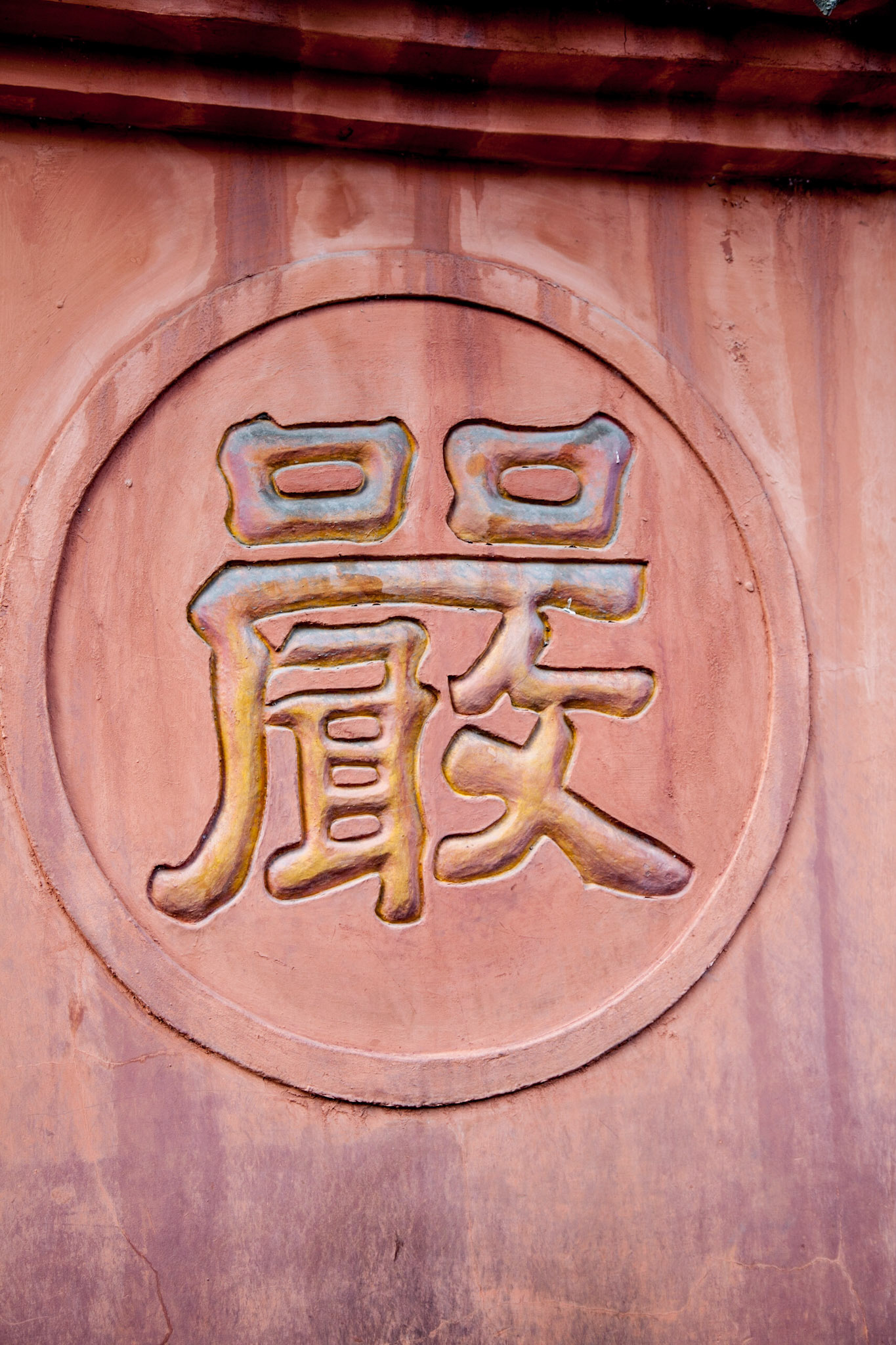


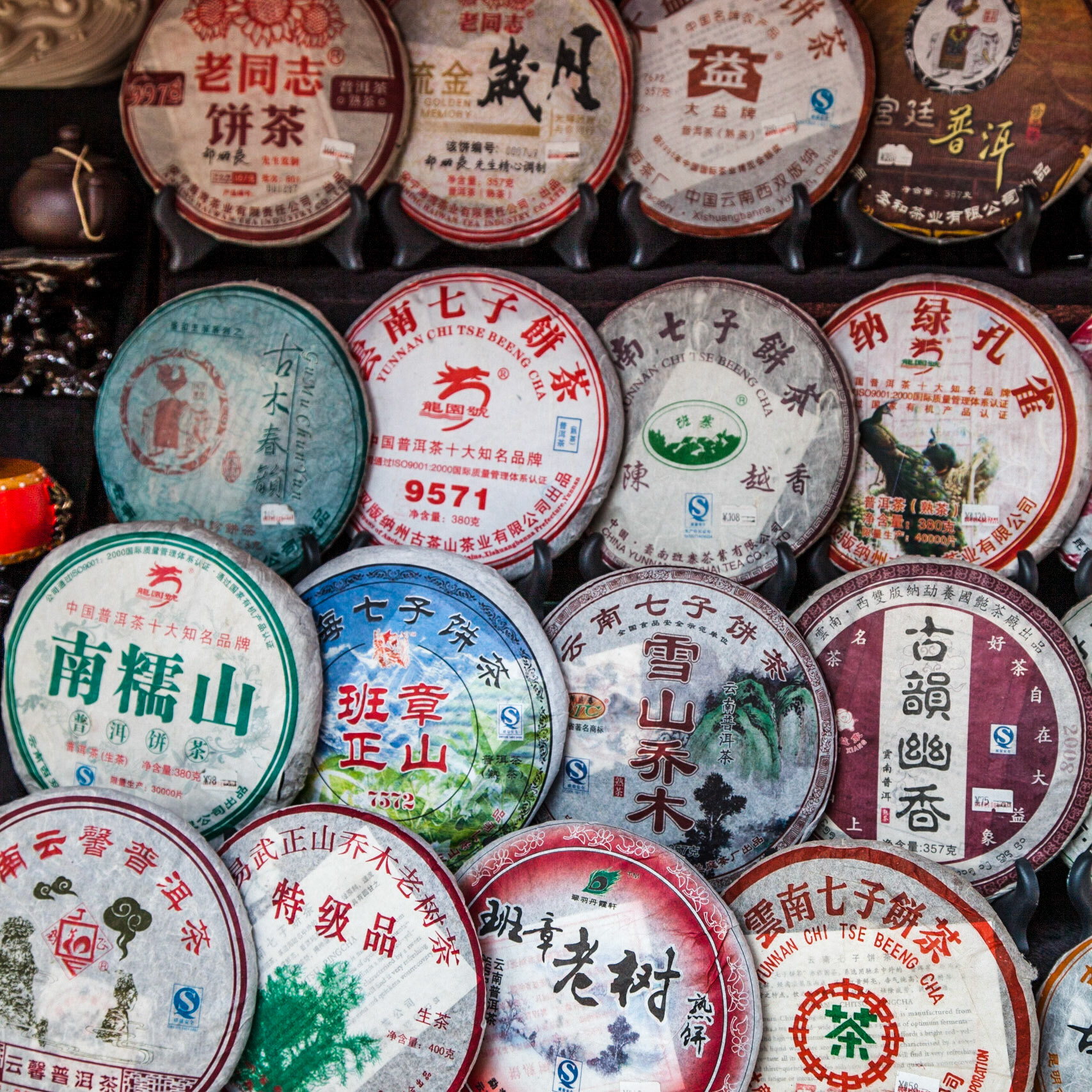








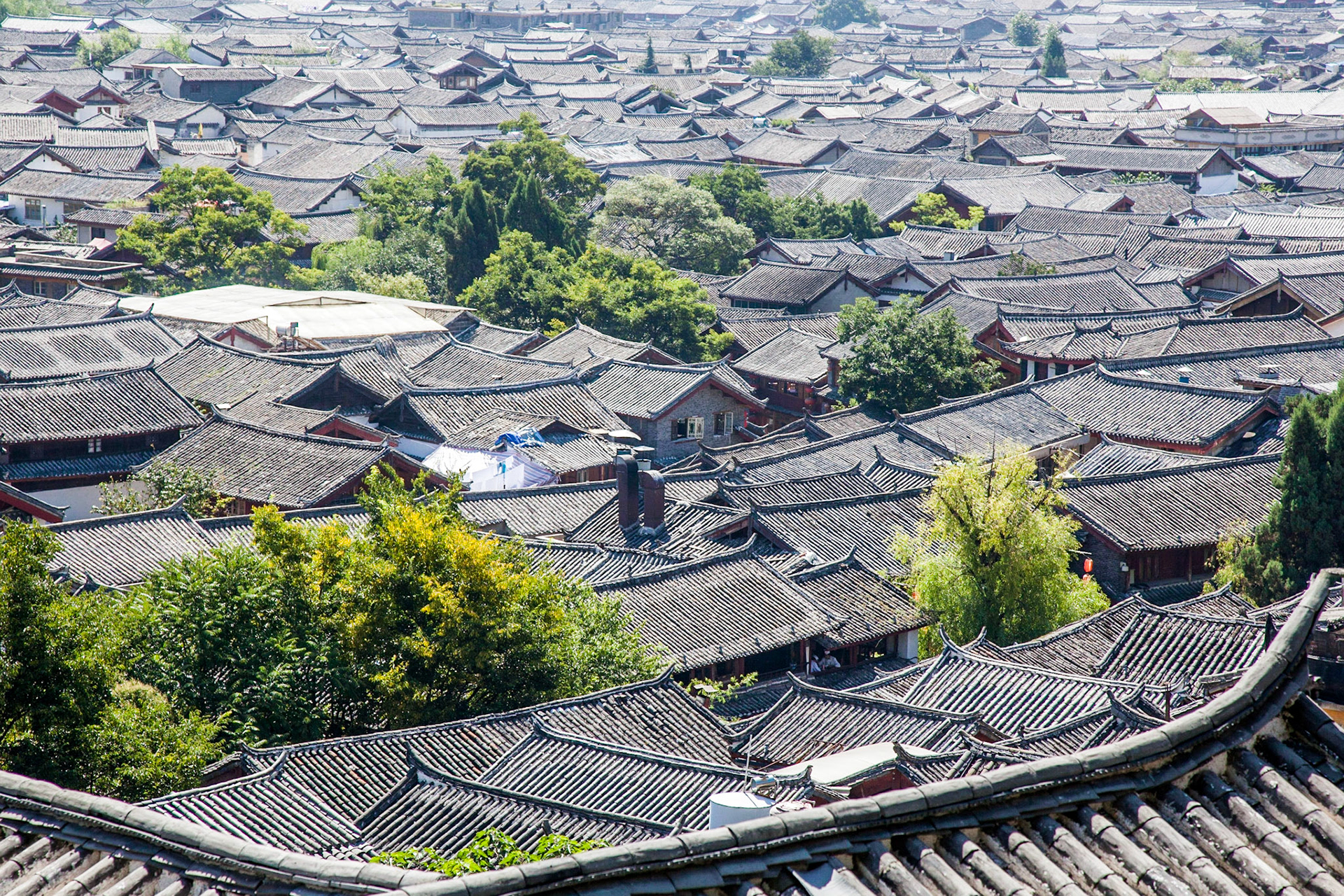















![The Ganden Sumtsenling Monastery, also known as Sungtseling and Guihuasi[1] (Tibetan: དགའ་ལྡན་སུམ་རྩེན་གླིང་, dga' ldan sum rtsen gling, Chinese: 松赞林寺 Sōngzànlín Sì), is a Tibetan Buddhist monastery situated 5 kilometres (3.1 mi) from the city of Zhongdian at elevation 3,380 metres (11,090 ft) in Yunnan province, China. Built in 1679, the monastery is the largest Tibetan Buddhist monastery in Yunnan province and is sometimes referred to as the Little Potala Palace. Located in the capital of Diqing Tibetan Autonomous Prefecture, it is also the most important monastery in southwest China.
It belongs to the Yellow Hat sect of Tibetan Buddhism of the Gelukpa order of the Dalai Lama. The Fifth Dalai Lama's Buddhist visionary zeal established the monastery in Zhongdian, in 1679. Its architecture is a fusion of the Tibetan and Han Chinese. It was extensively damaged in the Cultural Revolution and subsequently rebuilt in 1983; at its peak, the monastery contained accommodation for 2,000 monks; it currently accommodates in its rebuilt structures 700 monks in 200 associated houses.[2] [3][4][5]](https://cdn.myportfolio.com/77e00edcd7fd7868c9dd7f214fd5b191/7529cc48-6770-4544-8812-6bc359867e31_rw_1920.jpg?h=d16a25ad3c92f040dac16955101dd084)
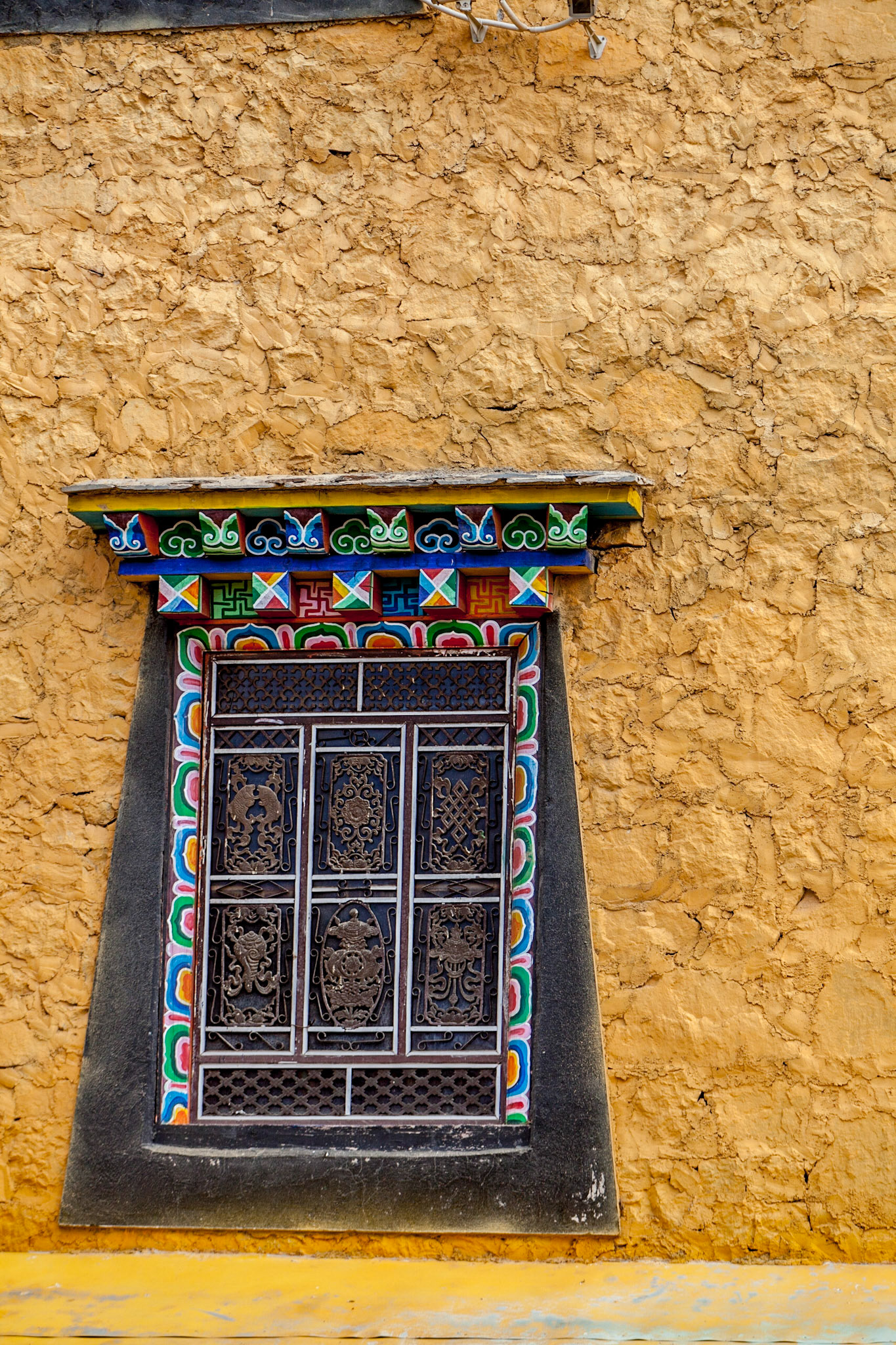
![The Ganden Sumtsenling Monastery, also known as Sungtseling and Guihuasi[1] (Tibetan: དགའ་ལྡན་སུམ་རྩེན་གླིང་, dga' ldan sum rtsen gling, Chinese: 松赞林寺 Sōngzànlín Sì), is a Tibetan Buddhist monastery situated 5 kilometres (3.1 mi) from the city of Zhongdian at elevation 3,380 metres (11,090 ft) in Yunnan province, China. Built in 1679, the monastery is the largest Tibetan Buddhist monastery in Yunnan province and is sometimes referred to as the Little Potala Palace. Located in the capital of Diqing Tibetan Autonomous Prefecture, it is also the most important monastery in southwest China.
It belongs to the Yellow Hat sect of Tibetan Buddhism of the Gelukpa order of the Dalai Lama. The Fifth Dalai Lama's Buddhist visionary zeal established the monastery in Zhongdian, in 1679. Its architecture is a fusion of the Tibetan and Han Chinese. It was extensively damaged in the Cultural Revolution and subsequently rebuilt in 1983; at its peak, the monastery contained accommodation for 2,000 monks; it currently accommodates in its rebuilt structures 700 monks in 200 associated houses.[2] [3][4][5]](https://cdn.myportfolio.com/77e00edcd7fd7868c9dd7f214fd5b191/1cd0ca3f-f0c3-476a-a7b7-a3c83f0199ee_rw_1920.jpg?h=4ac5cb737dc9edf338c22aadb31d4c99)


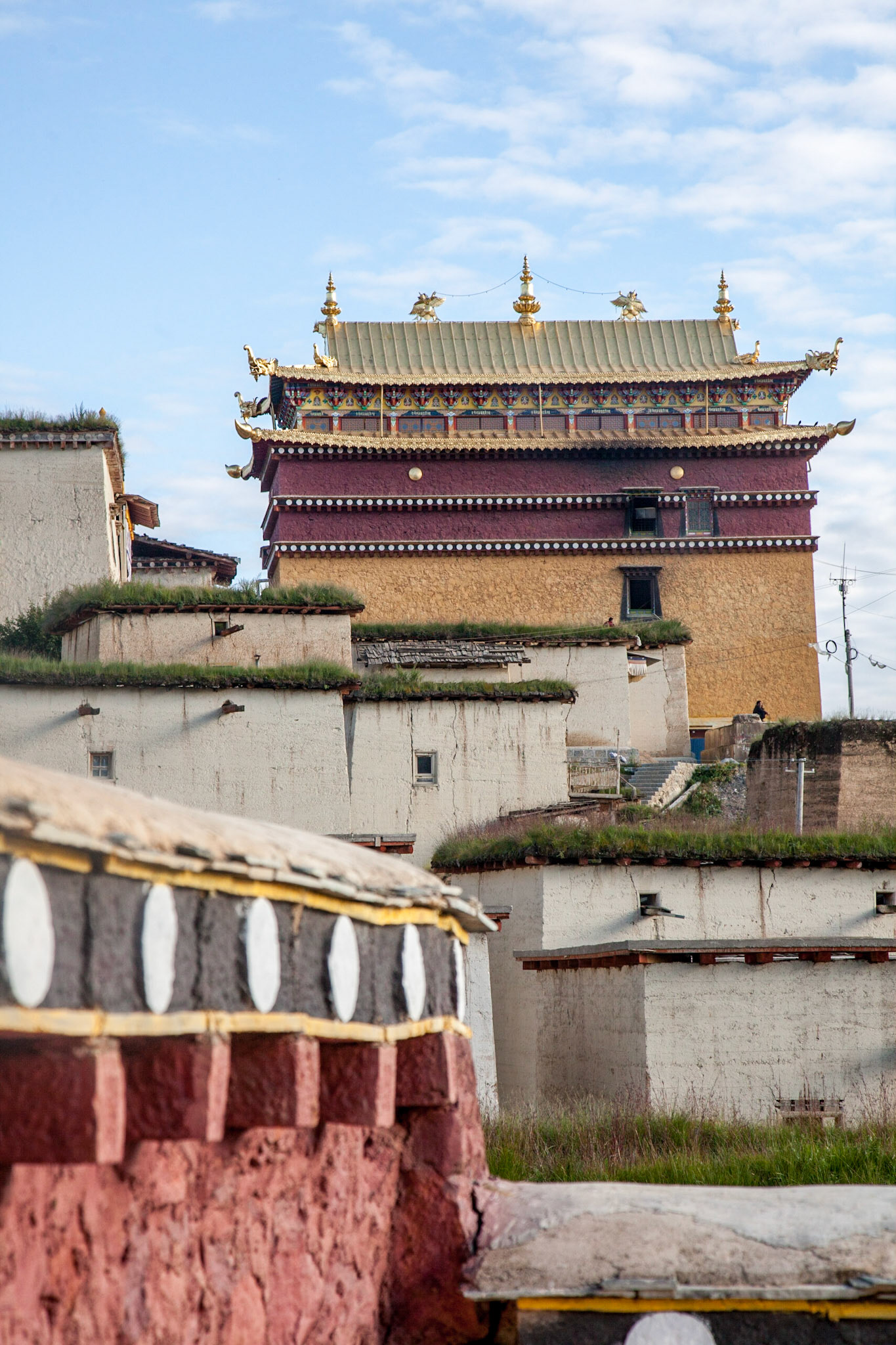




![The Ganden Sumtsenling Monastery, also known as Sungtseling and Guihuasi[1] (Tibetan: དགའ་ལྡན་སུམ་རྩེན་གླིང་, dga' ldan sum rtsen gling, Chinese: 松赞林寺 Sōngzànlín Sì), is a Tibetan Buddhist monastery situated 5 kilometres (3.1 mi) from the city of Zhongdian at elevation 3,380 metres (11,090 ft) in Yunnan province, China. Built in 1679, the monastery is the largest Tibetan Buddhist monastery in Yunnan province and is sometimes referred to as the Little Potala Palace. Located in the capital of Diqing Tibetan Autonomous Prefecture, it is also the most important monastery in southwest China.
It belongs to the Yellow Hat sect of Tibetan Buddhism of the Gelukpa order of the Dalai Lama. The Fifth Dalai Lama's Buddhist visionary zeal established the monastery in Zhongdian, in 1679. Its architecture is a fusion of the Tibetan and Han Chinese. It was extensively damaged in the Cultural Revolution and subsequently rebuilt in 1983; at its peak, the monastery contained accommodation for 2,000 monks; it currently accommodates in its rebuilt structures 700 monks in 200 associated houses.[2] [3][4][5]](https://cdn.myportfolio.com/77e00edcd7fd7868c9dd7f214fd5b191/346128ff-3fa2-46c9-ab7d-0126cd1be88c_rw_1920.jpg?h=81b441185eec08ed6832346a538e74c3)













![The Ganden Sumtsenling Monastery, also known as Sungtseling and Guihuasi[1] (Tibetan: དགའ་ལྡན་སུམ་རྩེན་གླིང་, dga' ldan sum rtsen gling, Chinese: 松赞林寺 Sōngzànlín Sì), is a Tibetan Buddhist monastery situated 5 kilometres (3.1 mi) from the city of Zhongdian at elevation 3,380 metres (11,090 ft) in Yunnan province, China. Built in 1679, the monastery is the largest Tibetan Buddhist monastery in Yunnan province and is sometimes referred to as the Little Potala Palace. Located in the capital of Diqing Tibetan Autonomous Prefecture, it is also the most important monastery in southwest China.
It belongs to the Yellow Hat sect of Tibetan Buddhism of the Gelukpa order of the Dalai Lama. The Fifth Dalai Lama's Buddhist visionary zeal established the monastery in Zhongdian, in 1679. Its architecture is a fusion of the Tibetan and Han Chinese. It was extensively damaged in the Cultural Revolution and subsequently rebuilt in 1983; at its peak, the monastery contained accommodation for 2,000 monks; it currently accommodates in its rebuilt structures 700 monks in 200 associated houses.[2] [3][4][5]](https://cdn.myportfolio.com/77e00edcd7fd7868c9dd7f214fd5b191/7885381f-50e6-48d7-b54c-2a4ff0661239_rw_1920.jpg?h=9b977bb456fb4692f2fcb0841a33e3ac)

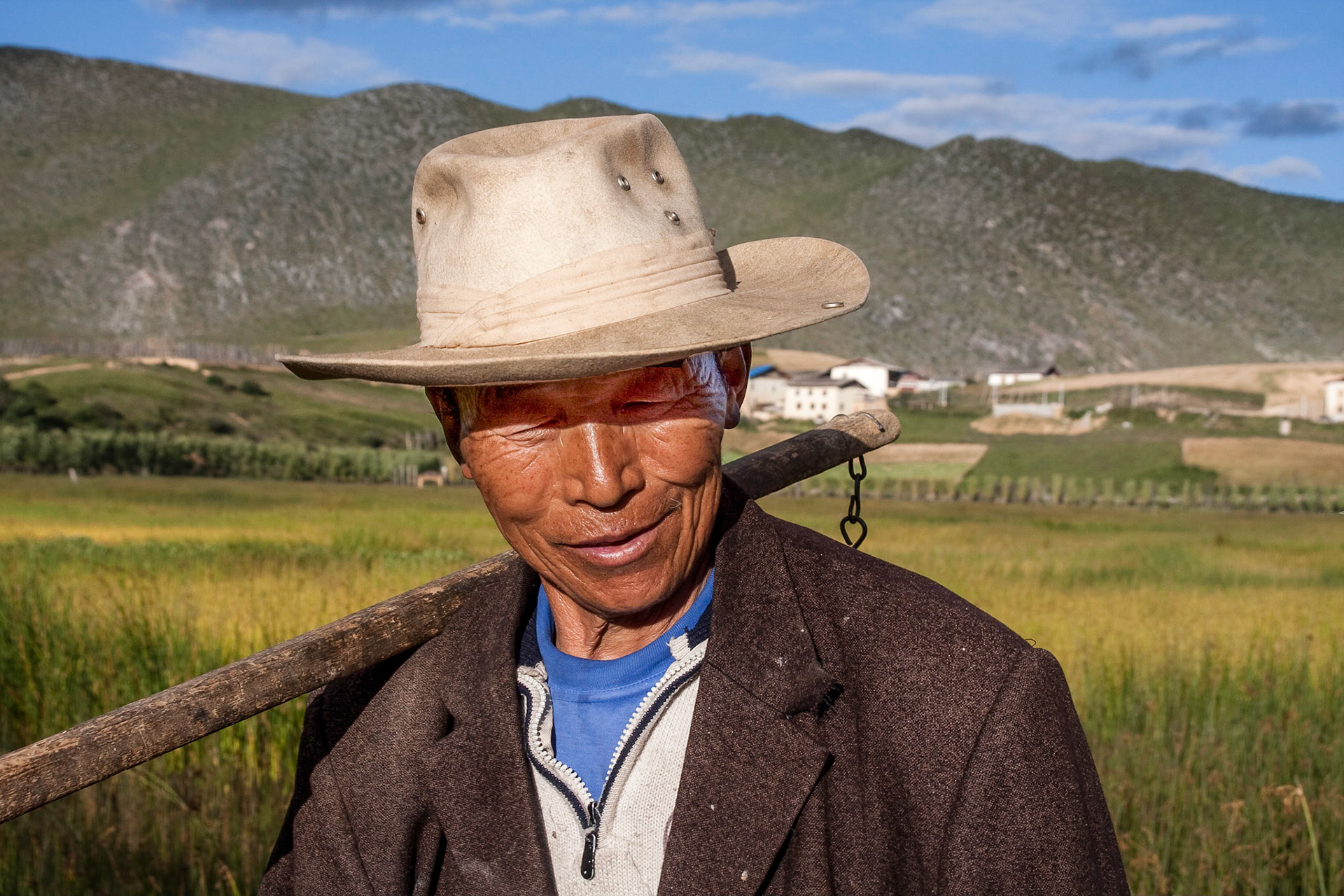
![The Ganden Sumtsenling Monastery, also known as Sungtseling and Guihuasi[1] (Tibetan: དགའ་ལྡན་སུམ་རྩེན་གླིང་, dga' ldan sum rtsen gling, Chinese: 松赞林寺 Sōngzànlín Sì), is a Tibetan Buddhist monastery situated 5 kilometres (3.1 mi) from the city of Zhongdian at elevation 3,380 metres (11,090 ft) in Yunnan province, China. Built in 1679, the monastery is the largest Tibetan Buddhist monastery in Yunnan province and is sometimes referred to as the Little Potala Palace. Located in the capital of Diqing Tibetan Autonomous Prefecture, it is also the most important monastery in southwest China.
It belongs to the Yellow Hat sect of Tibetan Buddhism of the Gelukpa order of the Dalai Lama. The Fifth Dalai Lama's Buddhist visionary zeal established the monastery in Zhongdian, in 1679. Its architecture is a fusion of the Tibetan and Han Chinese. It was extensively damaged in the Cultural Revolution and subsequently rebuilt in 1983; at its peak, the monastery contained accommodation for 2,000 monks; it currently accommodates in its rebuilt structures 700 monks in 200 associated houses.[2] [3][4][5]](https://cdn.myportfolio.com/77e00edcd7fd7868c9dd7f214fd5b191/ea215ae2-fee5-4ef2-ad4a-bb7cac1dc883_rw_1920.jpg?h=841919c824fe36f4aee09472e426cd72)
![The Ganden Sumtsenling Monastery, also known as Sungtseling and Guihuasi[1] (Tibetan: དགའ་ལྡན་སུམ་རྩེན་གླིང་, dga' ldan sum rtsen gling, Chinese: 松赞林寺 Sōngzànlín Sì), is a Tibetan Buddhist monastery situated 5 kilometres (3.1 mi) from the city of Zhongdian at elevation 3,380 metres (11,090 ft) in Yunnan province, China. Built in 1679, the monastery is the largest Tibetan Buddhist monastery in Yunnan province and is sometimes referred to as the Little Potala Palace. Located in the capital of Diqing Tibetan Autonomous Prefecture, it is also the most important monastery in southwest China.
It belongs to the Yellow Hat sect of Tibetan Buddhism of the Gelukpa order of the Dalai Lama. The Fifth Dalai Lama's Buddhist visionary zeal established the monastery in Zhongdian, in 1679. Its architecture is a fusion of the Tibetan and Han Chinese. It was extensively damaged in the Cultural Revolution and subsequently rebuilt in 1983; at its peak, the monastery contained accommodation for 2,000 monks; it currently accommodates in its rebuilt structures 700 monks in 200 associated houses.[2] [3][4][5]](https://cdn.myportfolio.com/77e00edcd7fd7868c9dd7f214fd5b191/fdef71e4-b0fa-4821-854d-3e2fd5f65ddf_rw_1920.jpg?h=f8058a0e714a98dea7a3b5fcbf4502bc)

![The Ganden Sumtsenling Monastery, also known as Sungtseling and Guihuasi[1] (Tibetan: དགའ་ལྡན་སུམ་རྩེན་གླིང་, dga' ldan sum rtsen gling, Chinese: 松赞林寺 Sōngzànlín Sì), is a Tibetan Buddhist monastery situated 5 kilometres (3.1 mi) from the city of Zhongdian at elevation 3,380 metres (11,090 ft) in Yunnan province, China. Built in 1679, the monastery is the largest Tibetan Buddhist monastery in Yunnan province and is sometimes referred to as the Little Potala Palace. Located in the capital of Diqing Tibetan Autonomous Prefecture, it is also the most important monastery in southwest China.
It belongs to the Yellow Hat sect of Tibetan Buddhism of the Gelukpa order of the Dalai Lama. The Fifth Dalai Lama's Buddhist visionary zeal established the monastery in Zhongdian, in 1679. Its architecture is a fusion of the Tibetan and Han Chinese. It was extensively damaged in the Cultural Revolution and subsequently rebuilt in 1983; at its peak, the monastery contained accommodation for 2,000 monks; it currently accommodates in its rebuilt structures 700 monks in 200 associated houses.[2] [3][4][5]](https://cdn.myportfolio.com/77e00edcd7fd7868c9dd7f214fd5b191/6773f05b-2b70-4def-b409-1cd65663f253_rw_1920.jpg?h=f6cba2cbbe08c944be182c31f33ef257)


![The Ganden Sumtsenling Monastery, also known as Sungtseling and Guihuasi[1] (Tibetan: དགའ་ལྡན་སུམ་རྩེན་གླིང་, dga' ldan sum rtsen gling, Chinese: 松赞林寺 Sōngzànlín Sì), is a Tibetan Buddhist monastery situated 5 kilometres (3.1 mi) from the city of Zhongdian at elevation 3,380 metres (11,090 ft) in Yunnan province, China. Built in 1679, the monastery is the largest Tibetan Buddhist monastery in Yunnan province and is sometimes referred to as the Little Potala Palace. Located in the capital of Diqing Tibetan Autonomous Prefecture, it is also the most important monastery in southwest China.
It belongs to the Yellow Hat sect of Tibetan Buddhism of the Gelukpa order of the Dalai Lama. The Fifth Dalai Lama's Buddhist visionary zeal established the monastery in Zhongdian, in 1679. Its architecture is a fusion of the Tibetan and Han Chinese. It was extensively damaged in the Cultural Revolution and subsequently rebuilt in 1983; at its peak, the monastery contained accommodation for 2,000 monks; it currently accommodates in its rebuilt structures 700 monks in 200 associated houses.[2] [3][4][5]](https://cdn.myportfolio.com/77e00edcd7fd7868c9dd7f214fd5b191/a48ecde3-62cc-4953-a6bf-e9c195fd04d9_rw_1920.jpg?h=2052f9ef1304b01ae4102f84453fd4f2)





















